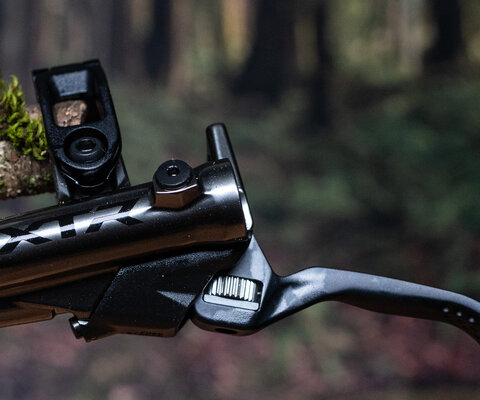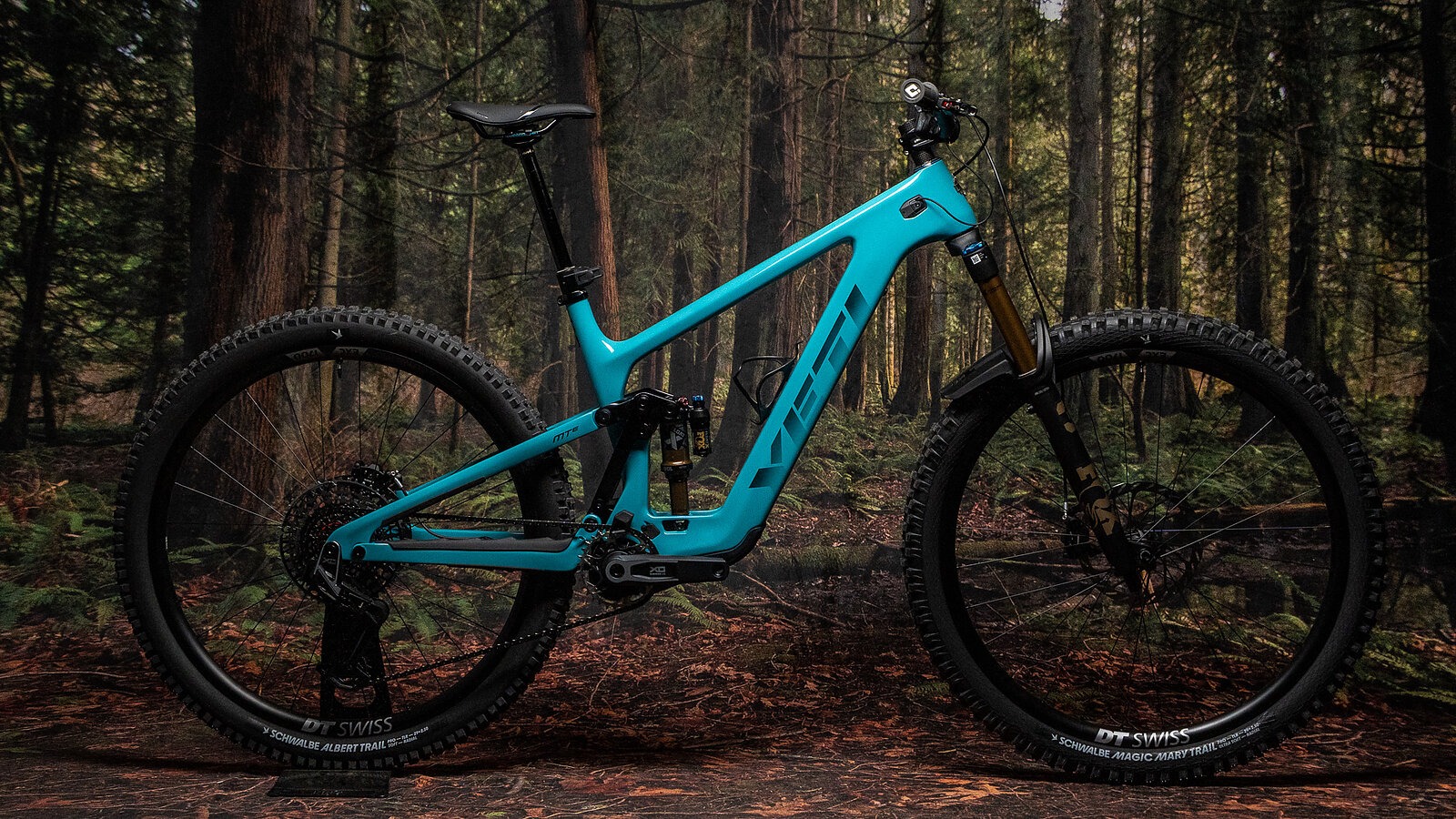
Yeti MTe T3 Bike Review
Words and Photos by Cy Whitling
A stealthy all-rounder
Today Yeti launched its second e-bike, the lighter weight MTe. While it cuts a fairly clean silhouette, it’s got a lot going on under the hood, including an all-new TQ motor, four-way progression adjustment, mixed wheel capability, and more.
This is one of those bikes where it’s very easy to get lost in the minutia, and focus on the details at the expense of the ride quality. So before we get into the nitty gritty: The MTe rides really well. It’s a very fun bike that can handle a wide range of terrain, and the new TQ HPR 60 drive unit is a noticeable upgrade over the old HPR 50 system.
Yeti MTe Details
- Travel: 145 mm (rear) 160 mm (front)
- Wheel Size: 29” with MX capabilities
- Size Tested: Large
- Build Tested: T3 XO Transmission
- Head Tube Angle: 64°
- Motor: TQ HPR 60
- Battery: 580 Wh
- Measured Weight: 43.5 lbs (19.73 kg)
- MSRP: $12,650
While Yeti’s full power 160E has been around for several years, and has a nice bunch of accolades and race wins to its name, the MTe is the brand’s first foray into the lighter weight, lower power market. And an impressive foray it is.
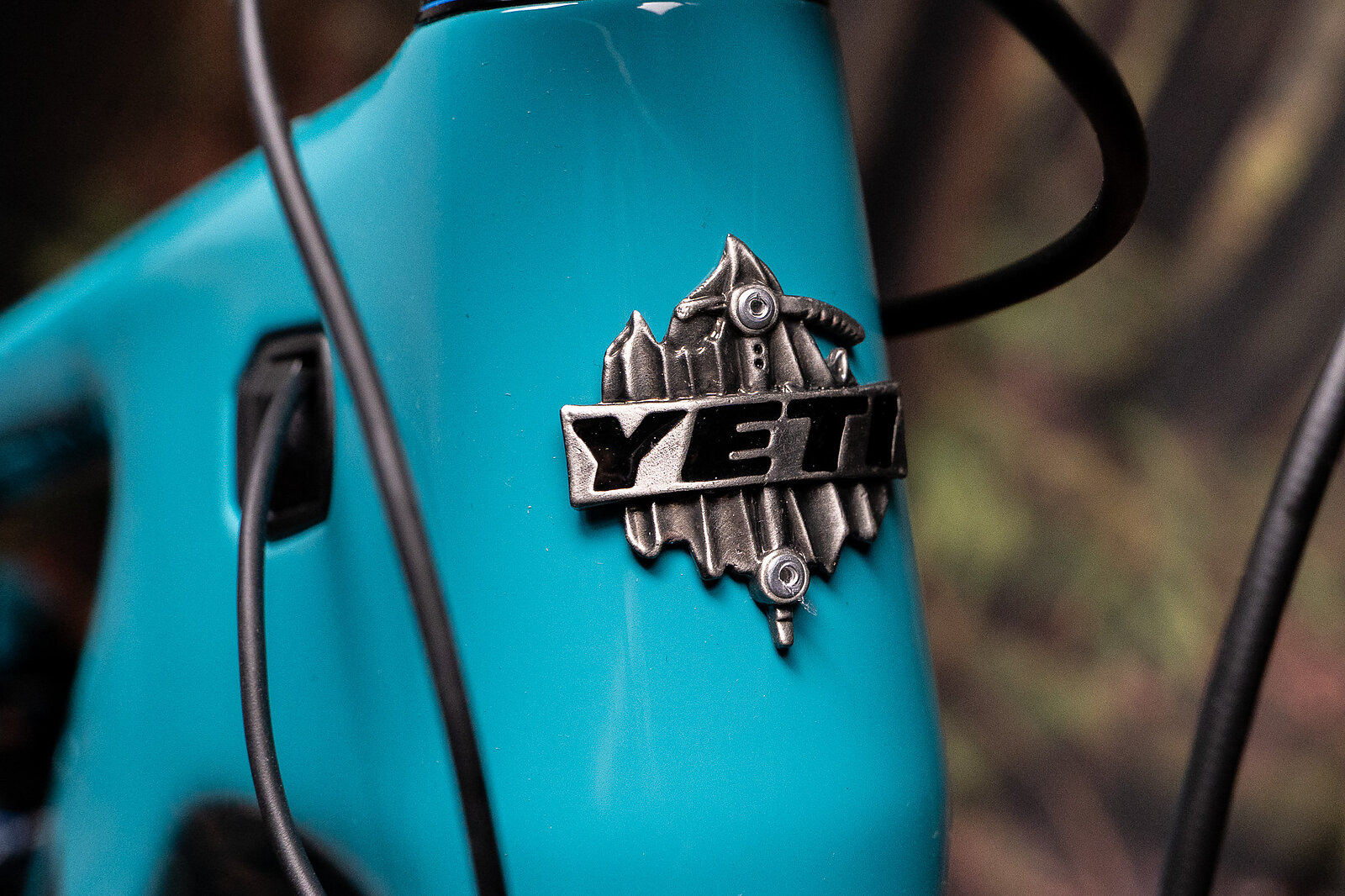
Motor and Battery
The MTe uses a new drive unit from TQ, the TQ HPR 60. This new motor delivers 60 newton-meters of torque and 350 watts of assistance as opposed to the 50 newton-meters and 300 watts of the old version. On paper, that doesn’t sound like a huge upgrade, but on the bike, it’s super noticeable. I’ve ridden several TQ HPR 50 bikes, and the MTe feels zippier, more powerful, and generally “better” than any of them. If I blind tested the old HPR 50 and new HPR 60 back to back, I don’t think I’d assume they were even in the same family or class of motor. The difference is stark.
The MTe comes stock with either a 580 watt-hour battery (T3 and C2 builds) or a 290 watt-hour option (T4 build). It also uses TQ’S new full color top tube display.
The HPR 60 is satisfyingly quiet, with just a low whine to indicate its assistance. The power delivery feels very natural, without any weird jumps or hops, instead it ramps up nicely to match my input.
E-bike range is incredibly subjective, based on rider weight, terrain, and assistance level. However, I (200 pounds) was able to crank out 4,500 feet of steep climbing at the highest assistance level before I hit the 10-percent limp mode of the 580 watt-hour battery. This system delivers an impressive level of power and range, at a low weight.
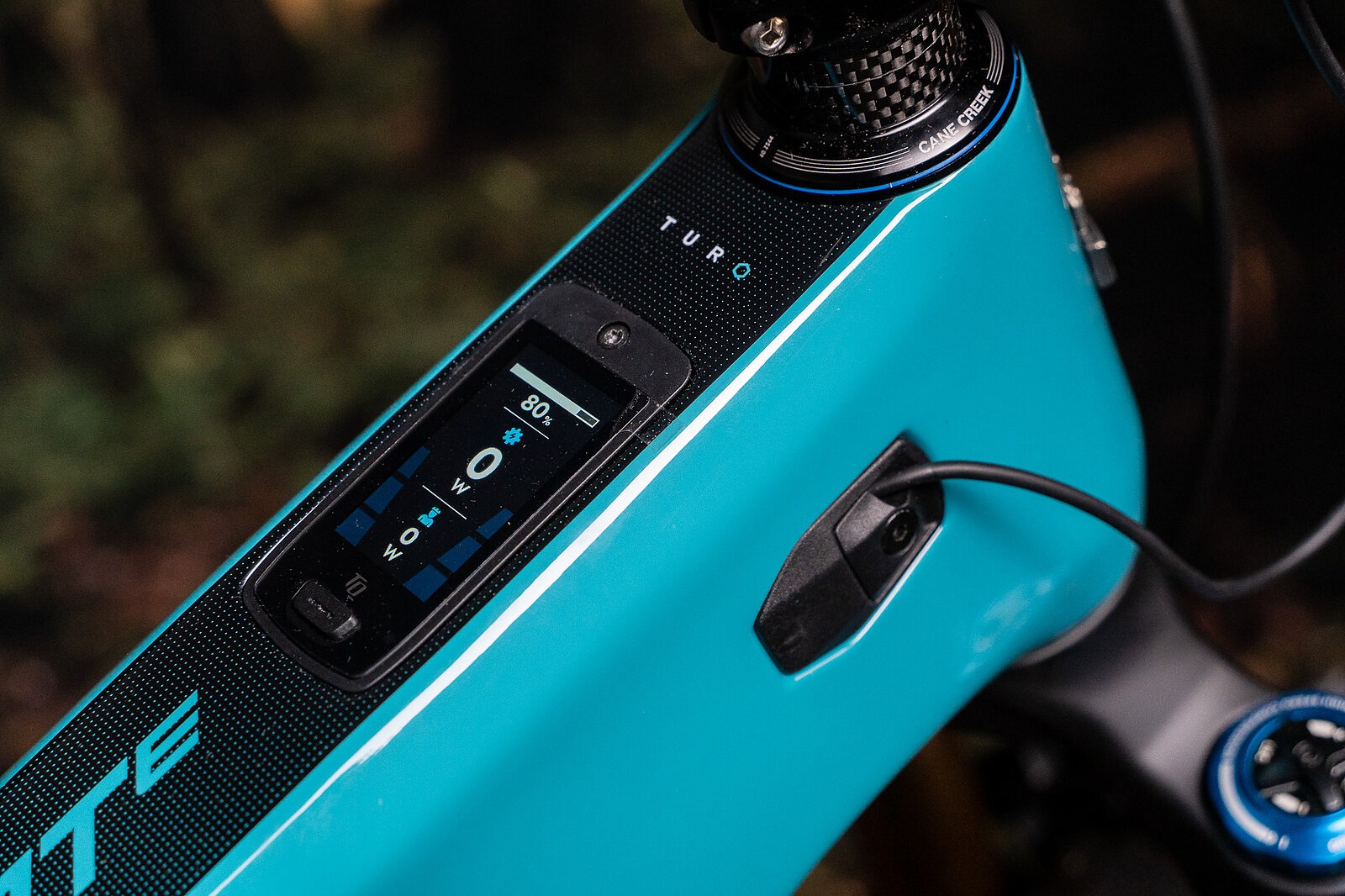
MTe Geometry
The MTe has fairly “normal” geometry for an e-bike launched in 2025. Unsurprisingly, it’s a little longer and slacker than the 160E. It sports a 64-degree head tube angle, and a 77-degree effective seat tube angle. The size large I’ve been riding has a 480-millimeter reach, and all sizes have 449 millimeter chainstays. Yeti is gently pushing their stack heights up, which I appreciate (635 millimeters on the size Large), and this bike fits me quite well. It’s always nice to straddle a bike for the first time and immediately feel right at home. There aren’t any glaring outliers or audacious geometry decisions at play here—instead everything feels reliably of-the-moment.
The MTe has a flip chip at the seatstay that allows you to swap in a 27.5-inch rear wheel, while preserving the rest of the bike’s geometry. Beyond that though, there aren’t any other geometry-adjusting flip chips.
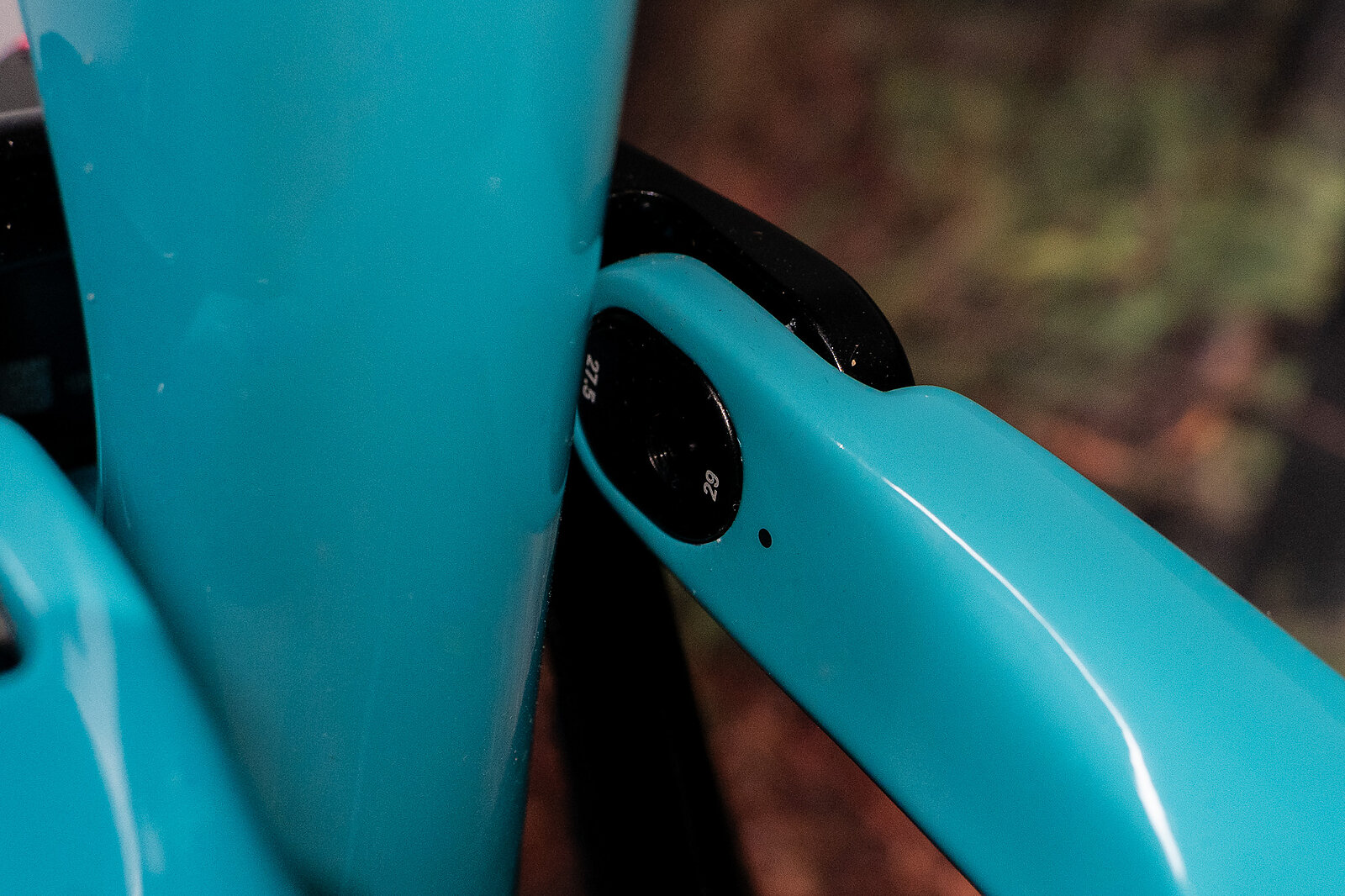
MTe Frame Details
That doesn’t mean that there isn’t room to experiment here though. Yeti used a standard ZS 44/56 headset, and included alignment notches so it should be easy to swap in reach or angle adjusting headsets. There’s a flip chip at the lower shock mount that allows riders to swap between four different progressivity settings, ranging from 12 to 25 percent. I’ll get into how that adjustment affects the MTe’s ride later.
The MTe uses the same Sixfinity suspension layout as the 160E, and their unreleased downhill bike. They say this system allows them to tune in exactly the characteristics they want for the given chassis, and they’ve put a bunch of effort into dialing in their ideal suspension characteristics for the MTe vs. full power e-bikes, or meat bikes.
The rest of the MTe’s frame details are tidy and dialed. It’s got internal, guided routing for all cables and hoses (including a rear derailleur) and Yeti says it’s easy to set up the brakes moto style. There’s a petite fender guarding the rear linkage, Yeti used self-centering collet hardware when possible, there’s a sweet little drain in the canoe at the lower shock mount, and all the other little frame details feel really well thought out.
The battery is swappable (and you can buy bigger or smaller batteries, as well as range extenders as aftermarket accessories). That battery swap isn’t a tool-free hot swap, but it takes just a few minutes, and Yeti included a clever storage space for an AirTag or Tile tracker to keep tabs on your bike.
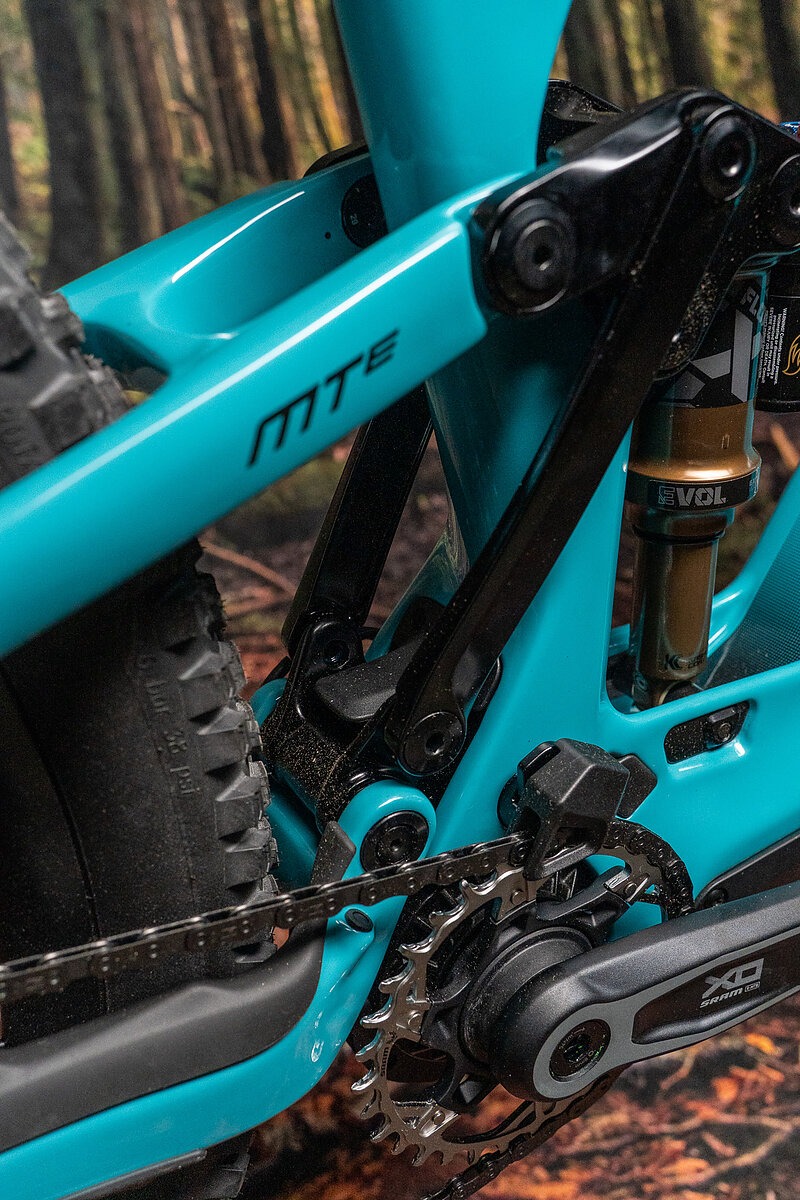
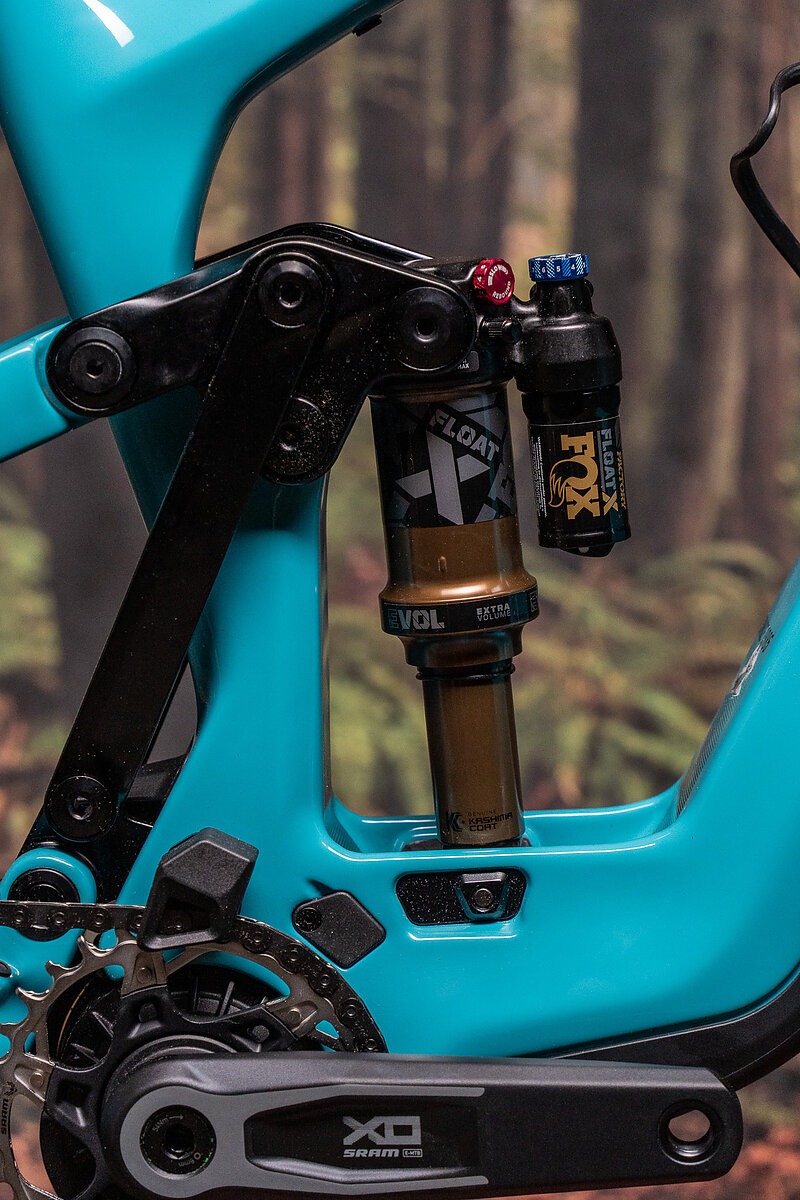
MTe Build
The MTe is available in two “normal” builds, the T3 and C2 options, and one very lightweight option, the T4. The T3 I tested is one of the most satisfyingly dialed builds I’ve ever had the pleasure of swinging a leg over. The T4 delivers a slightly more affordable experience with SRAM’s mechanical Transmission and new Reverb, along with Performance level Fox suspension.
The C2 is one of the most impressively weight-skimping builds I’ve seen. Yeti says it shaves 4.7 pounds off of the T3. Three pounds of that is battery—it jumps down to a 290 watt-hour battery, that also limits the motor’s power to 60Nm and 250 watts. The other 1.7 pounds are clawed out of the build kit. It gets EXO tires, Motive XC/trail brakes, a Float shock vs the Float X of the T builds, and even the lighter Grip X vs. Grip X2 damper in the fork, along with little details like titanium saddle rails. Comparing the C2 and T3 spec sheets is an interesting exercise in shaving as much weight as possible from a build without sparing expense.
Luckily, I rode the T3, not that uber-lightweight C2 build. And I got along with it well. SRAM’s XO Transmission and Maven Silver brakes are still really good. The new 200-millimeter Reverb is a welcome addition, and DT Swiss’s new EXC1700 carbon wheels have a nice ride quality and are great to see as a stock option without having to upgrade at checkout. Yeti’s in-house-designed 35-millimeter rise carbon bar handles vibrations well and has internal routing for the control cable, and WTB’s new Solano is a new favorite saddle.
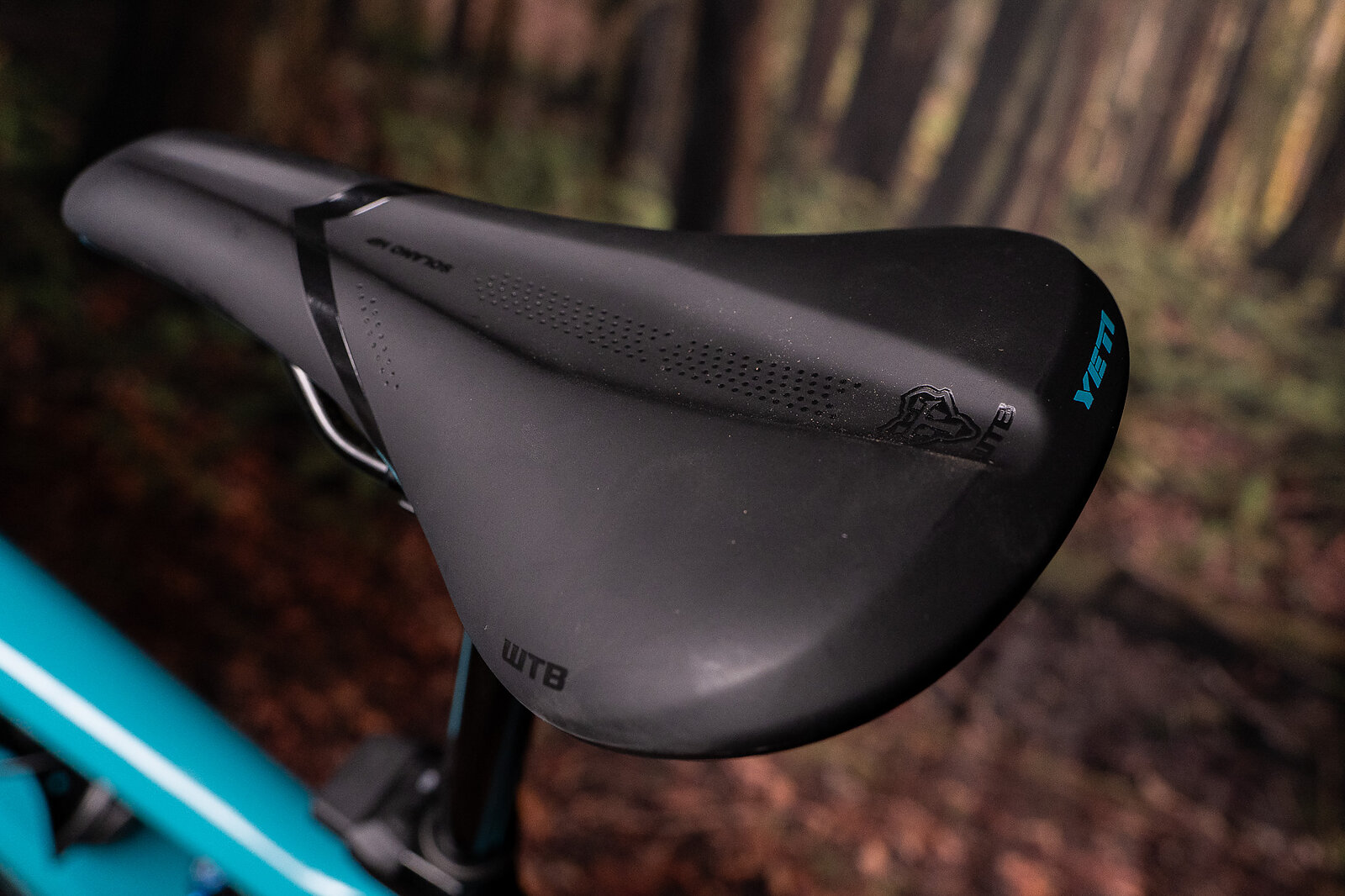
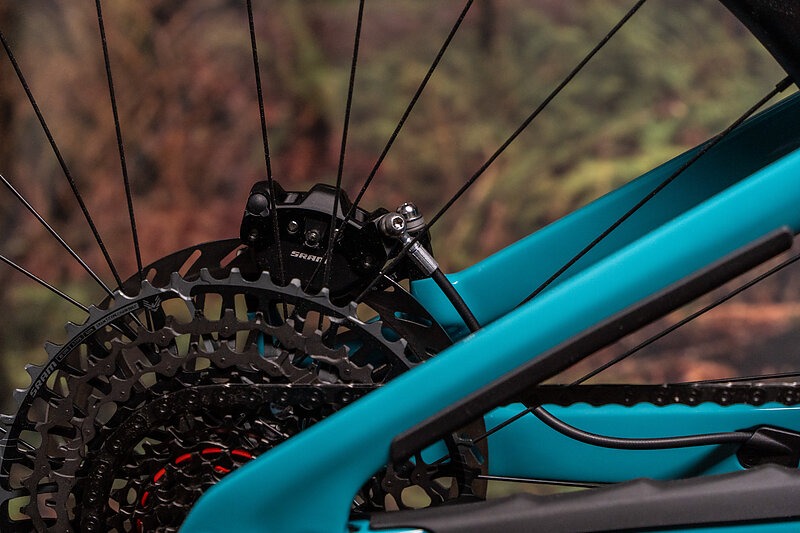
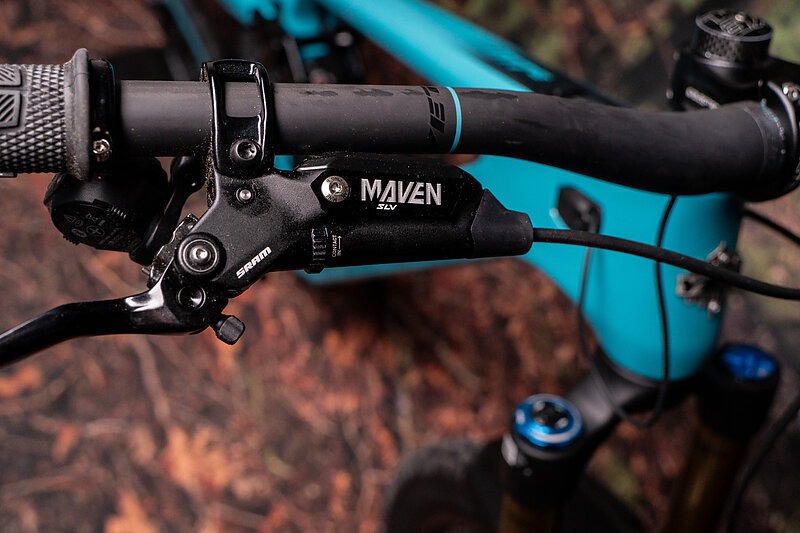
But the real standouts for me with the MTe were the tires and fork. It’s refreshing to see good tires come stock on a bike like this. Schwalbe’s Radial Magic Mary (in Ultrasoft no less) and Albert (Soft compound) are a great fit. They deliver great traction both up and downhill, and roll satisfyingly well. I rode the MTe in a pretty wide range of dirt conditions, and was so happy with these tires at every turn.
Second, the new Fox 36 was a standout. I expected to be a little undergunned with 250 pounds of man and e-bike pounding on a smaller-diameter fork. Instead I was pleasantly surprised. I rode the MTe front-heavy into plenty of steep, aggressive compressions, and the new 36 never squirmed. I’m looking forward to spending more time on this fork on other bikes, but so far, I’ve been quite impressed.
The Float X out back feels good but noisy—I found myself running the rebound circuit close to closed. That’s not unique to this bike, that’s just how my relationship with this shock goes. This is such a capable bike that I wouldn’t hesitate to bump up to a Float X2 or a coil shock.
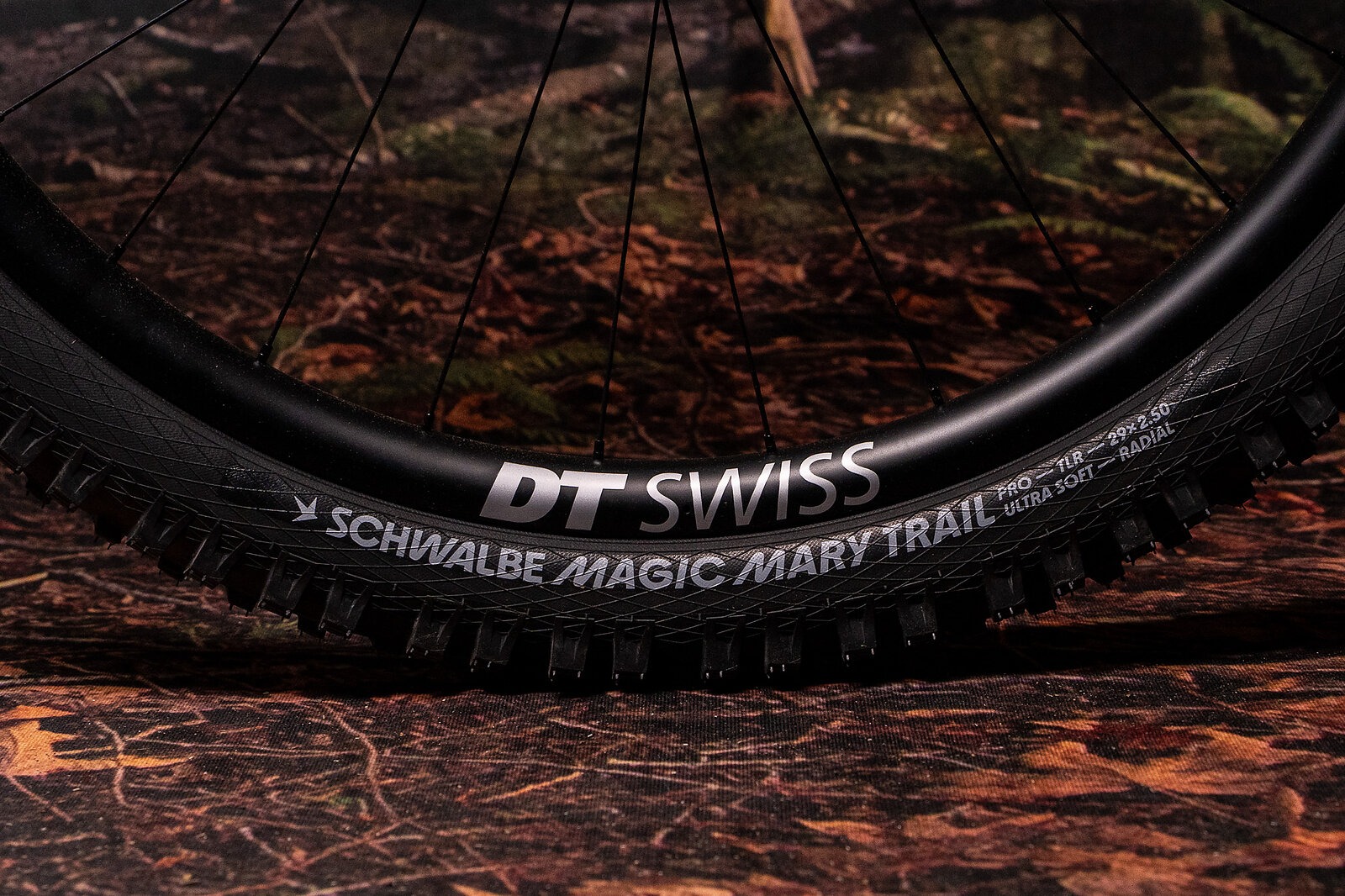
Riding the Yeti MTe
Yeti nailed the MTe’s suspension feel both up and downhill. It delivers such a nice blend of traction and support, and is super predictable. I tried all four progression settings, and ended up preferring the second-least progressive 14-percent setting. That’s not really surprising, I appreciate the predictable platform of more linear bikes, and I don’t care as much about off-the-top sensitivity and huck-to-flat support as some folks. Yeti has a handy suspension calculator (that also spits out recommended tire pressures) and they recommend 16.5 millimeters of sag at the shock. Make sure to readjust your sag when you mess with the flip chip.
That suspension, combined with the motor, means that the MTe is a hoot on technical singletrack climbs. No. It’s not a full power e-bike, and if you’re riding with friends with bigger motors, you’ll probably blow yourself up trying to hang on. Similarly, you’ll have to really soft pedal to hang out with friends on meat bikes. The MTe’s motor assist reminds me of my first few rides without training wheels when my dad would run behind me, giving me a little extra push on the hills.
The new drive unit certainly helps the MTe go uphill well, but I think Yeti’s suspension platform gets a fair bit of credit here too. Some similar e-bikes feel like they lock you into a “sit and spin” mentality, where, in order to get the most out of the system, you need to just maintain a constant cadence and plow over things. The MTe on the other hand responds well to quick out-of-the-saddle bursts, and body English. You can climb technical sections with more of the same technique and finesse you’d use on a meat powered bike.

But how does it go downhill? Short version: so well! The MTe punches above its travel class on the descents, without numbing the trail, or feeling unwieldy in mellower terrain. I started out careful, riding the MTe on familiar, flowing trails, getting a feel for the bike. That first ride I resolved to take it easy, dial in the suspension, and make sure I was comfortable. Instead I found myself overshooting jumps, and hitting nearly all of my full throttle lines on the first lap. That confidence has stuck with me. I continue to be impressed with how well the MTe handles steeper trails with techy compressions, while also being fun to mess around and slap side hits with. I think there are three parts to the equation of how the MTe descends: its geometry, its suspension, and how it carries its weight.
In terms of geo, the MTe is quite “normal” and the body position immediately felt familiar and comfortable. That goes a long way when you’re figuring out a new bike.
Second, that suspension: Good small bump compliance and traction, wonderful mid-stroke support, and a predictable end-stroke ramp. It does exactly what I want it to be doing, all the time. I especially noticed this in rutted, bumped-out runouts. Yeti nailed the anti-rise values on this bike so that it handles heavy, repeated hits in steeper terrain without standing up, and making the front end feel precarious, or squatting down too far and feeling locked out.
Finally, weight distribution. The MTe isn’t the absolute lightest e-bike around, but it carries that weight well. It’s still nimble and easy to move around in tight areas, and it doesn’t feel like the weight “winds up” and throws me forward as much as I’ve experienced on other bikes. It’s an intuitive and natural feeling weight, and it’s easy to predict what the bike’s going to do. Intuitive bikes breed confidence, and the MTe is the most confidence-inspiring electrified riding experience I’ve had yet.
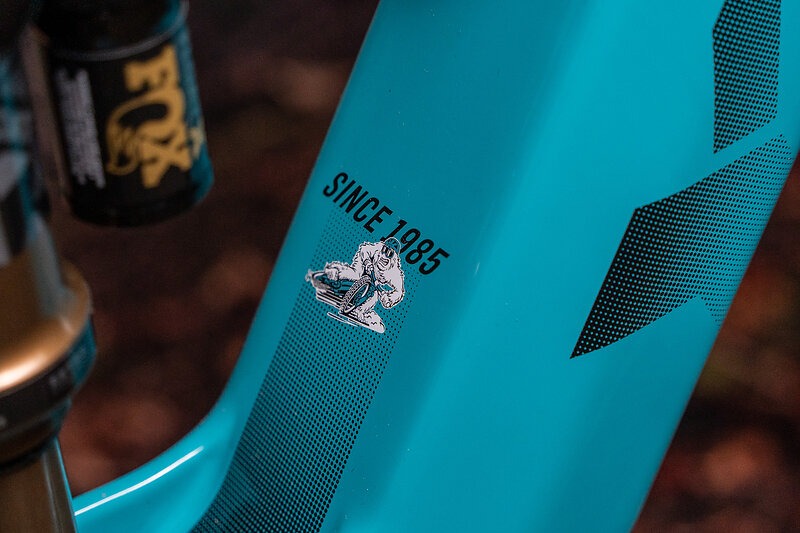

For Now
The MTe presents a really interesting balance of traits. On one hand, you’ve got the option to break the 40 pound barrier with a lightweight build and smaller battery, to build up a “get a quick ride at lunch” time machine that would be a hoot on mellower trails and flowy jumps.
But Yeti also approves the MTe for up to a 180-millimeter fork. Throw a 27.5” rear wheel on there, and maybe a coil shock and range extender, and you’ve got a zippy beast that can handle just about any trail and punches way above its stated rear travel. Lighter weight e-bikes can sometimes struggle to justify their existence, but instead the MTe opens up a world of possibilities.
Learn more: Yeti Cycles

